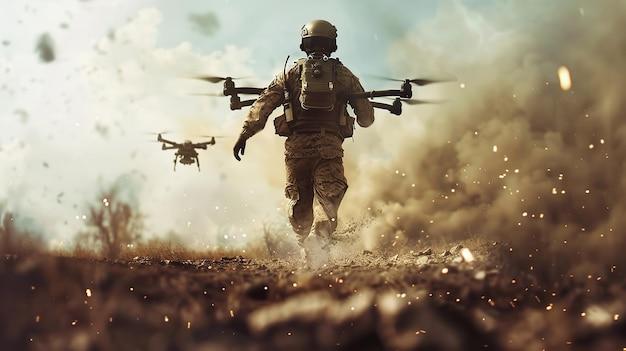In recent years, drones have revolutionized the way militaries around the world operate, transforming the very landscape of all military specialties. From surveillance and reconnaissance to combat and logistics, these unmanned aerial vehicles have become indispensable tools for modern warfare. In this article, we will explore how drones have reshaped the strategies and tactics employed by military forces across the globe, and the implications this has for the future of warfare.
How Drones Revolutionize Reconnaissance Operations
Drones have completely revolutionized reconnaissance operations in the military, changing the landscape of all military specialties. These unmanned aerial vehicles (UAVs) provide real-time intelligence, surveillance, and reconnaissance capabilities that were previously unimaginable. With the ability to fly at high altitudes for extended periods of time, drones offer a bird’s eye view of the battlefield, enabling military personnel to gather critical information without putting themselves in harm’s way.
One of the key advantages of drones in reconnaissance operations is their versatility. Drones can be equipped with a variety of sensors, cameras, and other technologies to gather a wide range of intelligence, from monitoring enemy movements to conducting search and rescue missions. In addition, drones are cost-effective and have the ability to cover large areas quickly and efficiently. As technology continues to advance, drones will play an increasingly important role in military operations across the globe, enhancing the capabilities of all military specialties.
Enhancing Precision Strike Capabilities with Drone Technology
Drones have revolutionized the way military forces plan and execute precision strikes. These unmanned aerial vehicles provide real-time intelligence, surveillance, and reconnaissance capabilities that enhance operational effectiveness on the battlefield. By utilizing drone technology, military units can accurately target enemy positions and minimize collateral damage.
Furthermore, drones have the potential to transform all military specialties, from infantry tactics to logistics support. In addition to precision strike capabilities, drones can be used for aerial resupply missions, medical evacuations, and communication relay operations. With advancements in drone technology, the military can adapt to evolving threats and maintain a strategic advantage in the modern warfare landscape.
Utilizing Drones for Logistics and Supply Chain Management in the Military
Drones have revolutionized the way logistics and supply chain management are handled in the military. These unmanned aerial vehicles are now being utilized for a wide range of tasks, from delivering essential supplies to troops in remote locations to conducting surveillance missions in enemy territory. With their ability to fly long distances and access hard-to-reach areas, drones have become a vital tool for enhancing the efficiency and effectiveness of military operations.
By leveraging drones in logistics and supply chain management, the military is able to streamline processes, reduce costs, and improve overall operational outcomes. With the use of drones, troops can receive critical supplies faster and more efficiently, increasing their readiness and effectiveness on the battlefield. Additionally, drones provide a level of flexibility and adaptability that traditional logistics methods simply cannot match, making them an invaluable asset across all military specialties.
Integrating Drones for Search and Rescue Missions in Military Operations
Drones are revolutionizing military operations across all specialties, including search and rescue missions. The use of drones in these critical operations has proven to be invaluable in providing real-time aerial surveillance, delivering supplies to inaccessible areas, and locating missing personnel in a more efficient and timely manner. By integrating drones into search and rescue missions, military teams are able to cover larger areas, gather crucial information, and make informed decisions that can save lives.
With advancements in technology, drones have become smaller, more agile, and equipped with high-definition cameras and sensors that can withstand harsh conditions. This allows them to navigate challenging terrains, withstand extreme weather conditions, and provide vital data to military personnel on the ground. By leveraging the capabilities of drones, military forces are better equipped to respond to emergencies, conduct search and rescue operations, and ensure the safety and security of their personnel.
Wrapping Up
As drones continue to revolutionize the landscape of military specialties, it is evident that their impact is undeniable. From surveillance to combat operations, these advanced technologies have forever changed the way our armed forces conduct operations. As we look towards the future, one thing is certain – the use of drones will only continue to grow and evolve, reshaping the very nature of warfare as we know it. The possibilities are endless, and the potential for innovation is limitless. It is with cautious optimism that we embrace this new era of military technology, always mindful of the ethical implications and consequences. The future is here, and drones are leading the charge.


